I spent 10 days using the popular mindfulness app Headspace - this is what it's like
And it's expensive!

Headspace ultimately makes meditation accessible to non-practitioners. But with a poor trade-off.
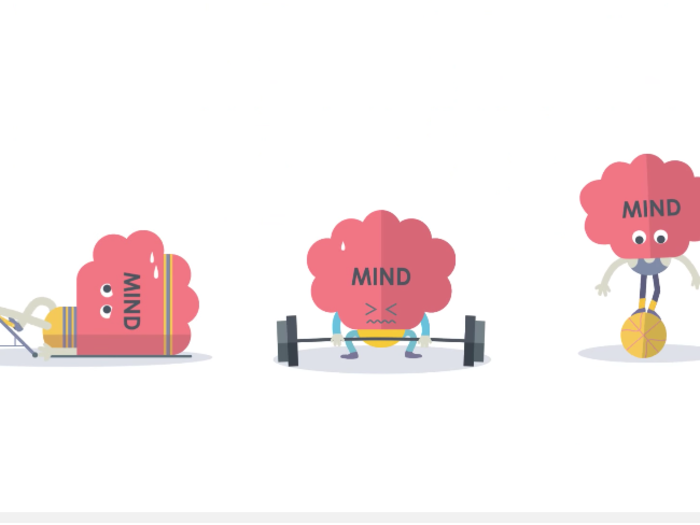
I finally tried meditation after reading "10% Happier: How I Tamed the Voice in My Head, Reduced Stress Without Losing My Edge, and Found Self-Help That Actually Works — A True Story." It's an excellent book that my friends had repeatedly encouraged me to read.
I've struggled my whole life with feeling like I'm being run by my emotions. Tomorrow I might wake up in a bad mood and have no idea why.
Meditating hasn't cured me of that. But it does help me to be aware of such situations and to address them. It might help me understand that the bad mood I'm experiencing is just as empty as random memories from childhood that pop up every now and again.
Unfortunately, Headspace's introduction to meditation doesn't help you reach this kind of understanding. It can help you feel relaxed or calm, which are nice if you're looking for help with falling asleep or focusing on work. But that's far short of what meditation can potentially offer you.
In an attempt to keep users going, Headspace tries to turn meditation into a kind of a game.
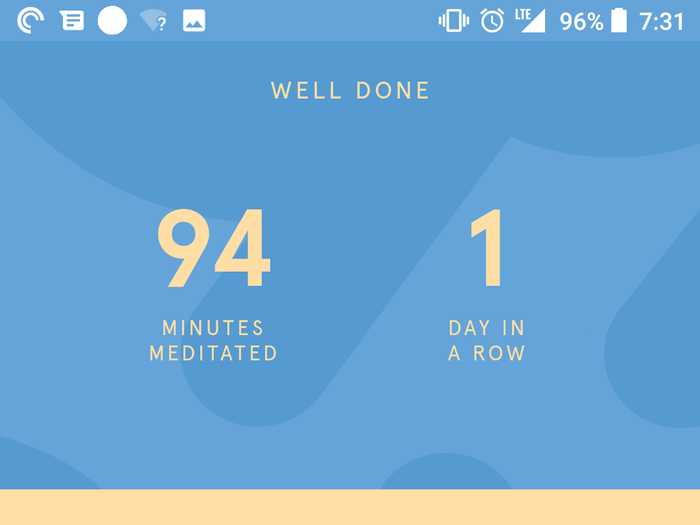
The fall chill hasn't set in yet in Brooklyn, so I meditate in Prospect Park most of the time. Sometimes when I get back home from meditating, my wife asks me something like, "How was your meditation?"
She's just being nice, of course, and I often respond with something simple. But the truth is that by meditating, I'm trying to escape self-judgment. If I'm comparing one meditation session to another, I'm doing it wrong — the point is to simply watch each breath, to focus on that breath, and to step behind the waterfall of endless thoughts and feelings.
Whether you're talking about secular mindfulness meditation, traditional Buddhist meditation, or any of the many other types of meditation out there, the goal isn't to go for as long or as many days in a row as possible. The goal — always — is to just to be aware of your thoughts and self.
But Headspace tries to make a game of meditation, tracking how long you meditate and how many days in a row you've had a meditation session. The idea, like all such efforts, is to encourage you to keep coming back to the app to improve your scores or keep your streak going.
However, given what meditation is supposed to be about, that game aspect feels tremendously out of place and counterproductive. My colleague Rich Feloni highlighted the danger after he went far deeper down the Headspace rabbit hole than I did.
"On days when I'm tired or running behind schedule, I've found myself faking a meditation session by fast-forwarding the lesson so the app thinks I actually sat through it," Feloni wrote. "Whatever it takes to keep the streak going!"
This is exactly the kind of behavior that an app for guided meditation shouldn't encourage.
If Headspace were my introduction to meditation, it wouldn't have convinced me to continue
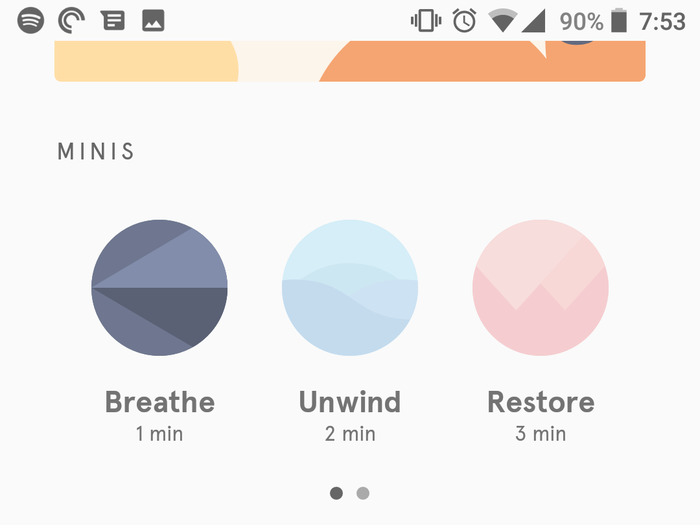
To Headspace, meditation is self-help. As someone who had experience with meditation before using the app, I know it offers much more than that.
The goal of mindfulness meditation is to have control over your own mind. It's not about pushing out bad thoughts or feelings, but about seeing and acknowledging them before letting them go. Rather than having your mind ordered around by an endless stream of thoughts, meditation is a means of stepping back and seeing the stream for what it is.
Through this practice, you can put some space between your emotions and thoughts and how they impact your moment-to-moment life. This can help you overcome anxiety, or a bad break-up, or other stressful things. But the goal of meditation is to be mindfully aware of your stream of thoughts, not to conquer your personal problems.
It's entirely possible that Headspace directs users to that kind of mindfulness after the introductory sessions. But the app's first 10 days didn't seem promising. Those sessions were centered around trying to help users fix personal issues. To me, that seemed antithetical to the point of meditation.
The app oversimplifies meditation.
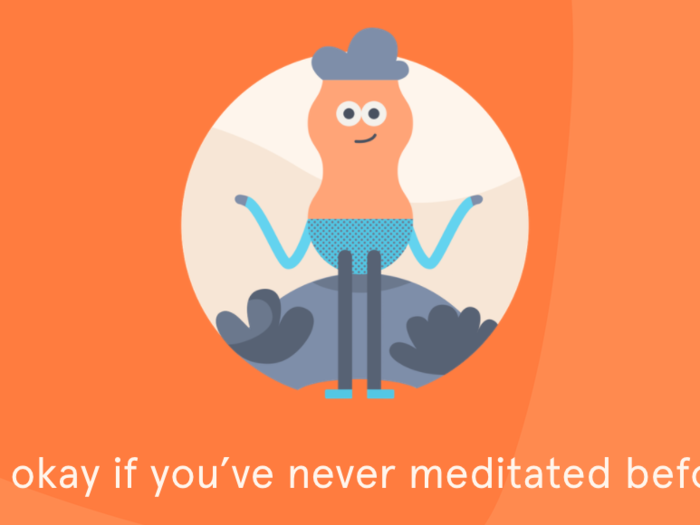
I'm already convinced of meditation's importance. I'm at a point in my practice where I want to go deeper. In comparison to my typical daily practice — about 30 minutes of guided mindfulness meditation, usually broken into chunks — that offered by Headspace seems really undemanding.
Part of that is certainly intentional. Headspace's introductory sessions are intended for people who are skeptical, reluctant, or just curious. They can't be too demanding.
Even so, the 10-day introductory sessions still felt surprisingly shallow. They don't even touch on concepts such as body scanning or noting. Instead, Headspace spends so much time explaining the concept behind meditation and establishing the foundations that by the time you're through with the initial 10 sessions, you've barely cracked the surface of understanding the practice.
Headspace's approach to meditation is an attempt to make it accessible to secular audiences.
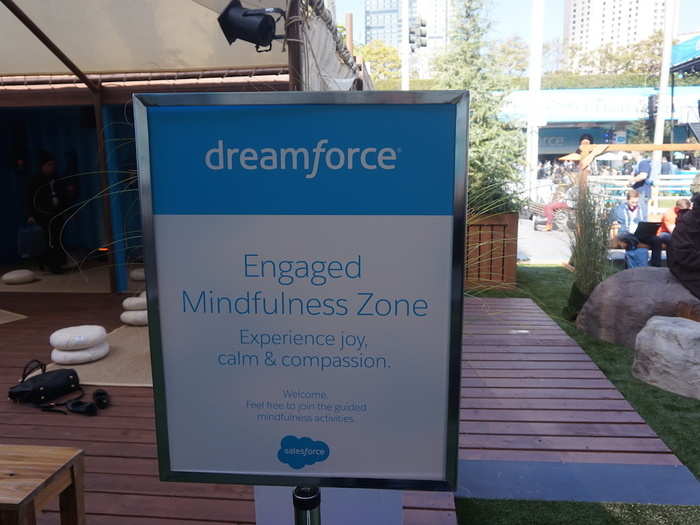
I'm not an expert when it comes to meditation. In recent years, I've explored various means of meditation, but am still figuring out what I like.
Headspace's brand of meditation is very similar to the type of secular mindfulness meditation written about in books such as Jon Kabat-Zinn's famous "Wherever You Go, There You Are." It takes the methods of meditation used by Buddhists — focusing on your breath, mentally scanning your body, and noting, or applying labels to parts of your consciousness — but removes discussion of enlightenment and related notions.
The difference is in the details: Modern secular mindfulness meditation aims to translate a traditionally spiritual practice into a secular one through explanation. Kabat-Zinn, Shinzen Young, and other teachers use scientific studies to explain the value of meditation practice. They aim to explain concepts like enlightenment and suffering through modern day, secular terminology.
Headspace takes those already pared down practices and attempts to simplify them further, often to an extreme.
Headspace's introductory sessions guided me through the early stages of meditation practice.

What's the point of meditation?
According to Headspace, it's a means of making your life better. The app offers to paying customers sets of guided meditations aimed at tackling problems related to anxiety, sleeplessness, and relationships. As such, Headspace comes across as something like a self-help app.
But the introductory sessions are more general and less focused on helping users solve particular problems. Indeed, the guidance offered by the man leading the introductory sessions would sound very familiar to anyone who's practiced traditional Buddhism-based meditation.
Here's a sample of an instruction from the first guided meditation:
"As you follow that movement [of the breath], the mind will wander away. Almost inevitably. No problem, if it does, it's perfectly natural. But as soon as you realize it's wandered, just acknowledging that, letting it go, and coming back to again to that rising and falling sensation."
You can quickly jump right in with your first meditation session.
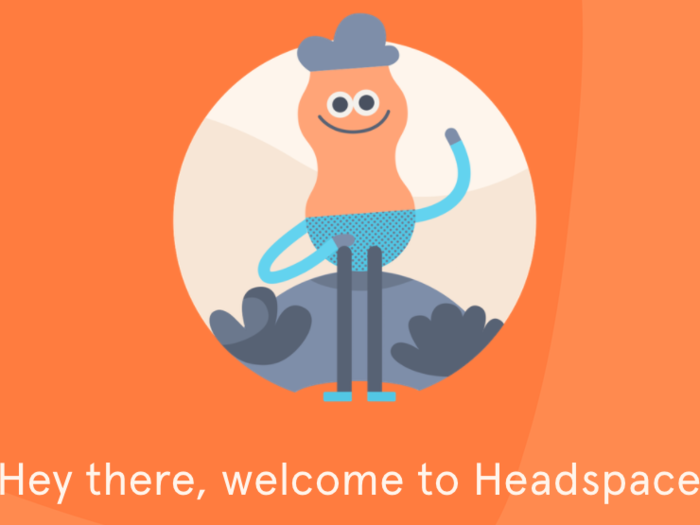
After getting through the initial setup and watching a short animated video about establishing your practice, you can get started meditating.
If you prefer shorter sessions or are skeptical about meditation in general, you can start with just three minutes a session. Alternatively, if you're ready for something a bit longer, you can choose a five- or - 10-minute session.
I would strongly suggest starting square in the middle at five minutes. That's still a short period of time, but it's long enough to feel the effects of meditation.
Every meditation with Headspace starts the same way. You establish your meditation position. You take three deep breaths. And then you close your eyes as you exhale on the third breath. It's a simple ritual that became second nature for me as I dove into my first 10 days with Headspace.
Headspace uses a simple reminder system to help beginners remember to meditate.
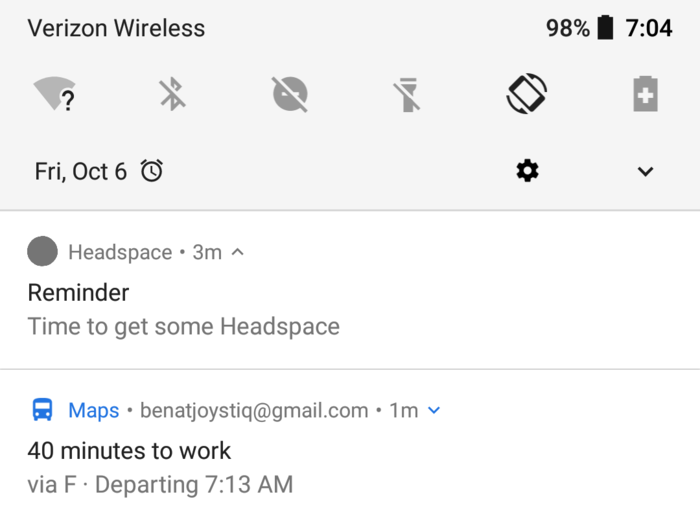
Before taking on the challenge of a meditation practice, the initial barrier to overcome is setting aside time every day. It's easy to forget to meditate or to put it off.
The first thing the app does is to help users schedule a time for meditation — and to set up a notification that reminds them each day at that time. This is an especially smart feature for beginners. It helps you establish a routine, and it can be easily stopped if you no longer require the heads-up.
You can come to Headspace with zero meditation experience — In fact, it's probably better if you do.
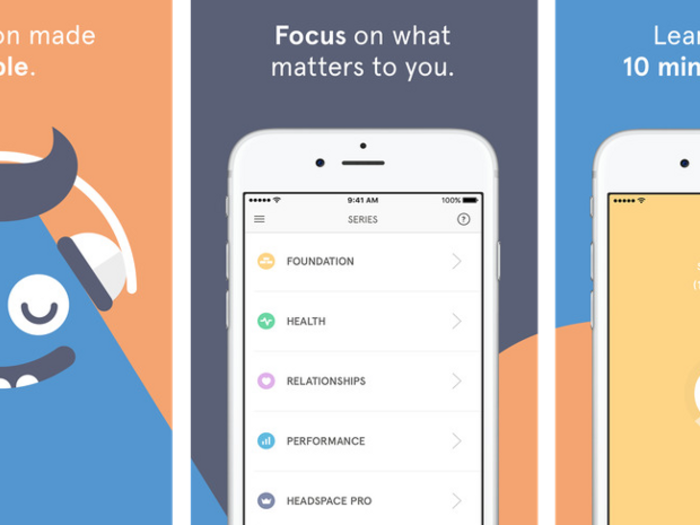
Headspace's first 10 sessions, which are part of the app's "Basics" pack of guided meditations, are aimed at people who haven't ever meditated. Rather than getting into the historic roots of meditation, the app immediately aims to simplify the concept into something palatable for everyone.
It starts off explaining how to meditate:
— Find a place sit, either on a cushion or a chair.
— Straighten your back, sitting comfortably without slouching.
— Close your eyes, and breathe.
Though these steps also apply to Buddhist meditation teaching, Headspace puts them in the context of mindfulness meditation.
The app doesn't offer escape from the endless cycle of suffering of Samsara, as Buddhists might put it. Instead it promises something more grounded in everyday live — to give you "some headspace."
Headspace is focused on secular, mindfulness-based meditation.
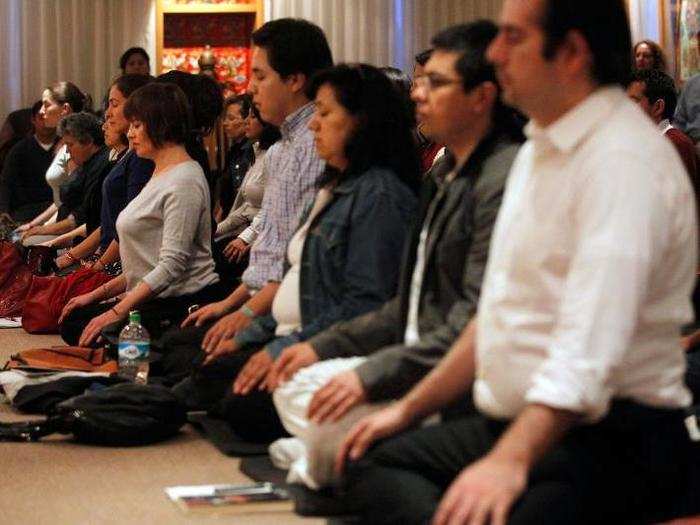
The history of meditation is deep, stretching back to before the beginning of the Current Era. Without going too far into the weeds, it's important to understand the difference between meditation as part of Hindu and Buddhist traditions on the one hand and secular mindfulness meditation on the other.
Headspace doesn't purport to offer enlightenment or to explain the concept of Samsara — the endless cycle of suffering, death and rebirth that is at the center of those Indian religions. Instead, the app aims to teach "the essentials of living a healthier, happier life."
Though the principle of the practice is very similar — watching your breath — the underpinnings of each are drastically different. Headspace is based in modern science, while Buddhist and Hindu meditation is based on the writings and teachings of various spiritual leaders.
In many ways, Headspace feels like Buddhism-lite. It's got all the flavor of spiritual meditation with none of the religious underpinnings. That's not a huge surprise, as one of the app's founders is an ordained Buddhist monk. His goal with the app is to bring meditation to people who might not have tried it otherwise.
Popular Right Now
Popular Keywords
- India’s wearables market decline
- Vivo V40 Pro vs OnePlus 12R
- Nothing Phone (2a) Plus vs OnePlus Nord 4
- Upcoming smartphones launching in August
- Nothing Phone (2a) review
- Current Location in Google
- Hide Whatsapp Messages
- Phone is hacked or not
- Whatsapp Deleted Messages
- Download photos from Whatsapp
- Instagram Messages
- How to lock facebook profile
- Android 14
- Unfollowed on Instagram
Advertisement